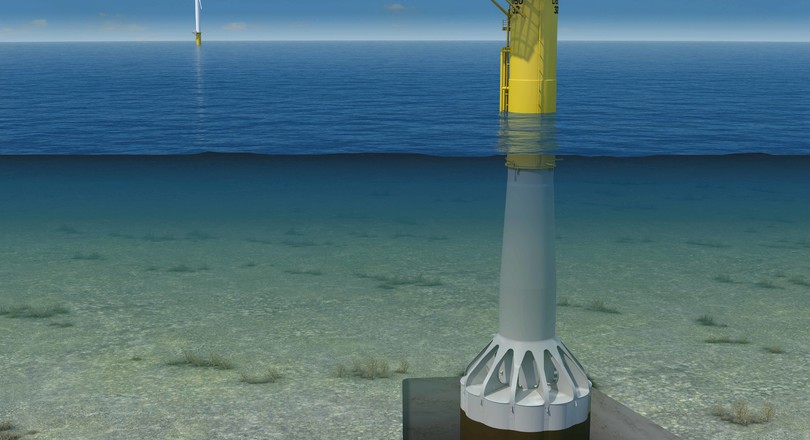
Next year, offshore concern Van Oord will be installing commercial 'suction buckets' at a wind farm in Germany. Two of the 33 piles will be fitted with this unusual foundation type, which uses much less material and energy.
Van Oord announced its plans last week. According to Van Oord, this is the first time that the technique will be used under commercial operating conditions, although Vattenfall is also working on a wind farm with suction buckets. Construction of the German wind farm begins in the summer, and is due to be completed next year, allowing it to start generating power in the second half of the year.
Suction buckets are a relatively new technology in the offshore wind world, although they have been around for 15 years already. They form an alternative to the monopiles that are now commonly used. Monopiles – long, heavy tubes – have to be driven into the seabed. The objection to this is twofold: piling at sea is expensive, and causes severe noise nuisance, which is particularly disturbing for porpoises. The consequence of this is that noise protection measures have to be taken and piling is only permitted at certain times of the year when cetaceans are not migrating.
UPSIDE-DOWN BUCKET
The buckets do not attract the same objections. They are a kind of steel buckets that are placed upside-down on the seabed. A pump then sucks the water from the bucket, creating a pressure difference with the surrounding water and causing the bucket to suck itself securely to the sandy soil. The weight of the steel column above the bucket then drives it deep enough into the seabed that it stands firm. No piling is used, resulting in much less damage to the surroundings. A suction bucket is also easy to remove entirely at the end of its lifespan, and can even be reused.

The disadvantage is that suction buckets are more expensive than monopiles. This is partly because they have not yet been used on a large scale. But they also require all sorts of equipment for pumping out the water and are more expensive to produce. Moreover, ground loss due to the flushing away of soil around a turbine foundation is a bigger problem when using suction buckets.
25 YEARS
Van Oord aims to use the two pilot buckets to investigate the pros and cons of the technology. But since the total costs will only become apparent at the end of the operating life of the turbine (in 25 years), it will probably be some time yet before the company knows whether or not these suction buckets are economically feasible.
If you found this article interesting, subscribe for free to our weekly newsletter!
Image: Van Oord
Nieuwsbrief
Vond je dit een interessant artikel, abonneer je dan gratis op onze wekelijkse nieuwsbrief.

